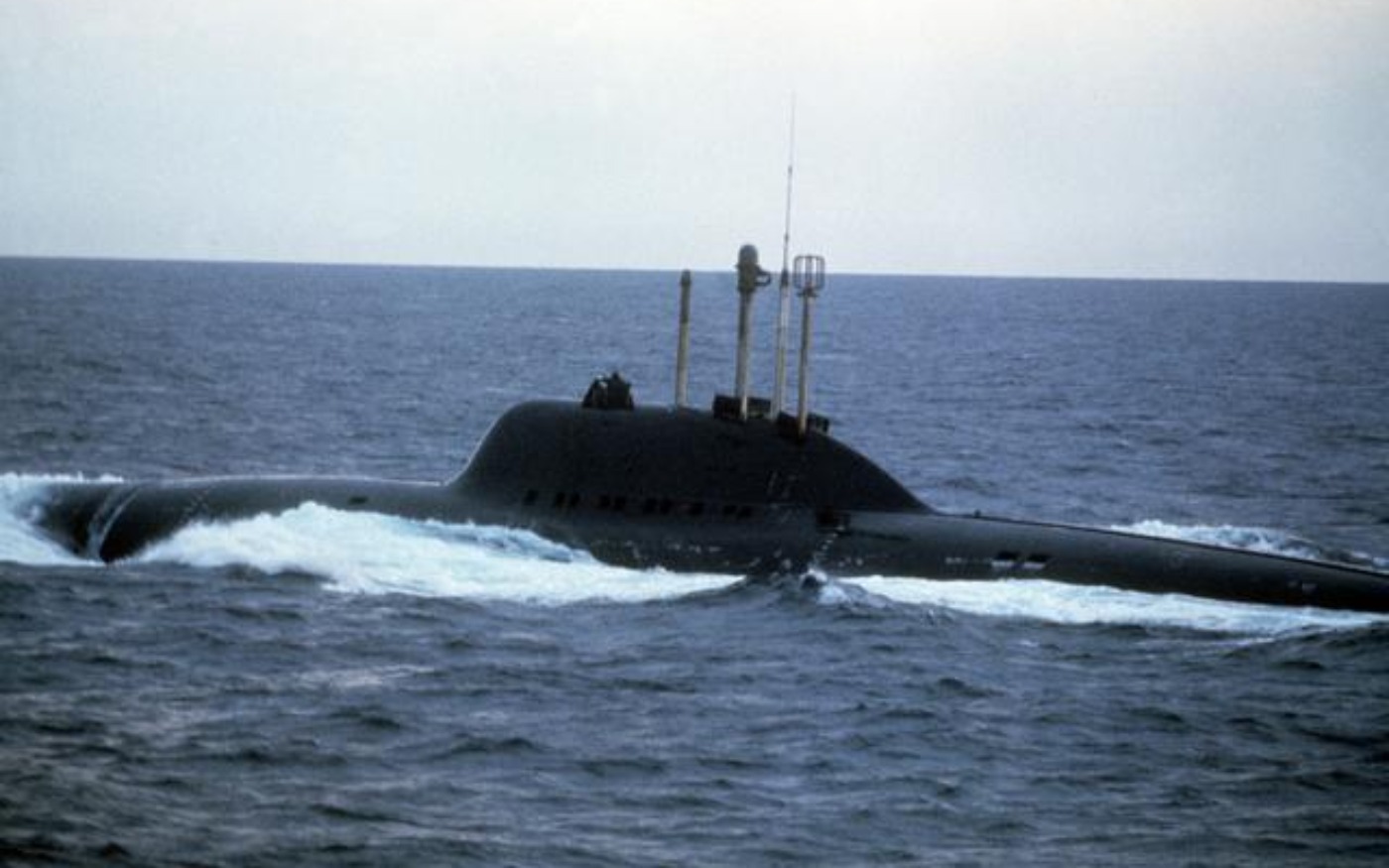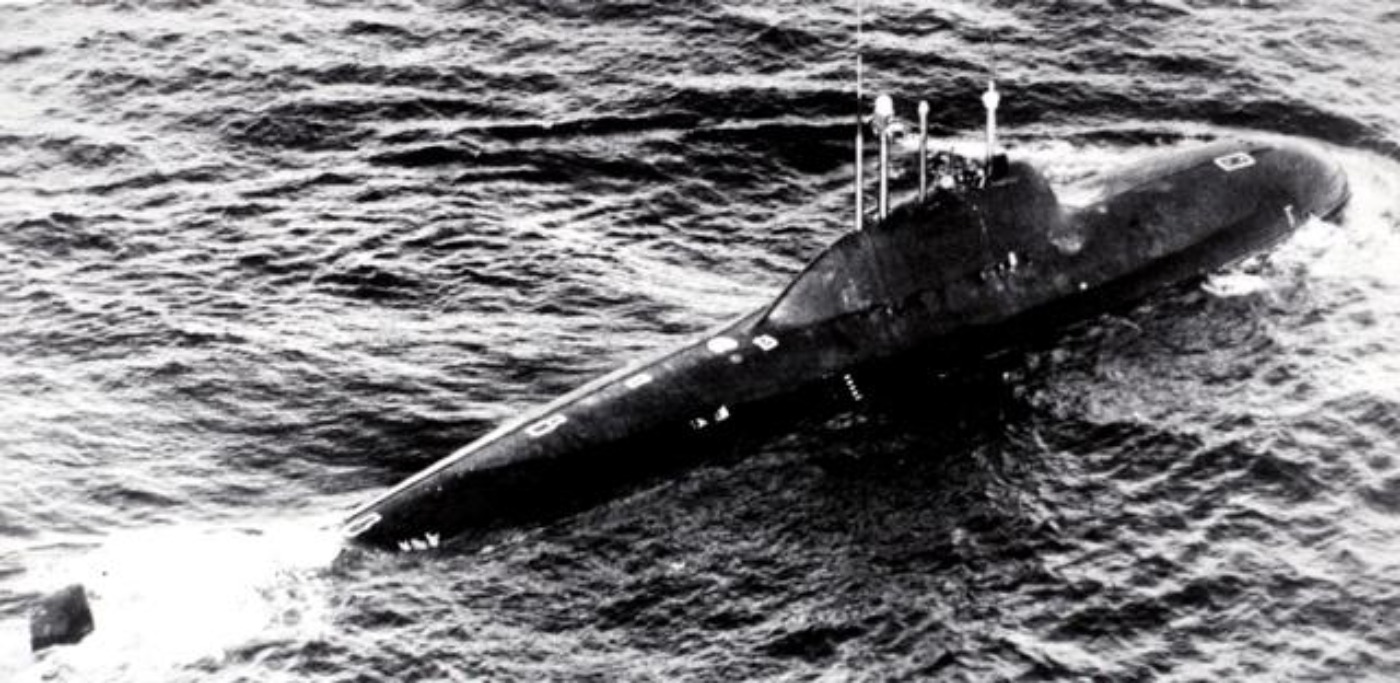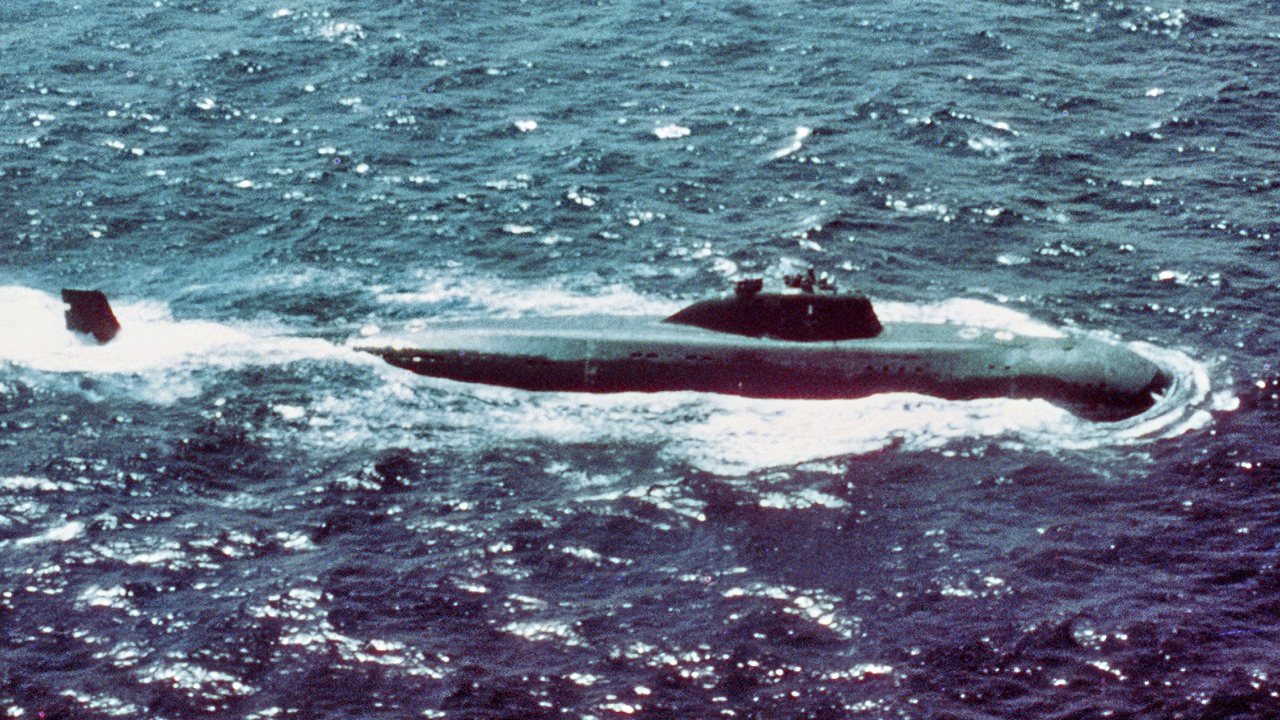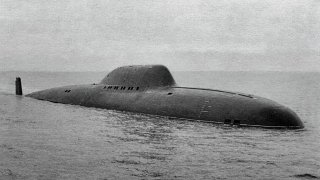Russia's Alfa-Class Submarine Had 1 Feature the Navy Can't Hope to Match
The Soviet Union, initially lagging behind the U.S. in submarine technology, developed the Type 705 Lyra (Alfa-class) to close the gap. It featured a titanium hull, something the U.S. Navy never used.
Summary and Key Points: The Soviet Union, initially lagging behind the U.S. in submarine technology, developed the Type 705 Lyra (Alfa-class) to close the gap.

-The Lyra combined brute force and high-risk technology. Its titanium hull and innovative lead-cooled reactor allowed it to dive deeper and move faster than any NATO submarine.
-Despite its impressive performance, including speeds of 41 knots and depths of 2,200 feet, the Alfa-class was plagued by high maintenance costs and reliability issues. The program's legacy influenced future Soviet designs, but only seven Lyra submarines were built and they were retired by the mid-1990s.
Soviet Alfa-Class Submarine: Cold War Speed and Depth Champion"
The Soviet Union began the Cold War well behind the United States in submarine technology. Although the Soviets acquired several of the most advanced German submarine types towards the end of the war, the United States had amassed a wealth of experience in submarine and antisubmarine practice from the Pacific War and the Battle of the Atlantic. Combined with other technological advantages, the United States leapt out to a significant lead in submarine tech (especially nuclear submarines) in the first two decades of the Cold War.
In particular, early Soviet nuclear submarines struggled to compete with the West in stealth and reliability. After the first few designs came to fruition, the Soviets decided to undertake a combination of brute force and extremely risky high technology. The brute-force part meant building a submarine that could move faster and dive deeper than any Western counterpart; the high-tech part meant innovative hull design, reactor design and material manipulation. The result was the Type 705 Lyra (known as Alfa in NATO), a submarine that the West regarded as a profound, if short-lived, threat to its undersea dominance.

How Alfa Was Born
With the Lyra class, the Soviets sought to accomplish two goals. First, they wanted to produce a weapon capable of changing the character of naval warfare in the North Atlantic and the Arctic, a weapon that could threaten the overwhelming surface advantages of the NATO navies. Unlike their Western counterparts, which preferred multirole platforms, the Soviets were fine submarines dedicated to a single mission: the high-speed “interception” of NATO surface squadrons, especially carrier battle groups. Second, they wanted to jumpstart technological development, producing innovations that future submarines would incorporate, if only in piecemeal fashion. An incidental third goal was to force NATO navies to spend money and time adapting to the threat that the Lyras would present.
The Lyra class certainly met the second criterion. Following an interim design (the K-162 “Papa”-class cruise-missile submarine), the Lyras had a titanium hull in order to produce tolerances necessary for high speed and for extreme deep diving. To keep the size of the crew small, the Lyra class employed advanced techniques for automating key systems, a decision which also enhanced the combat reaction speed of the crew, although it made at-sea repairs and maintenance extremely difficult.
To achieve high speed, the Alfas used a remarkably innovative lead-cooled fast reactor design. This allowed a tremendous amount of power in a compact space. However, it also created staggering maintenance problems, few of which could be resolved by the small crew at sea. Indeed, even in port the Soviet Navy struggled to keep the Alfas in service.
Alfa-Class Performance
The Lyras could put up numbers that no class of submarine has matched (apart from the “Papa” SSGN) before or since. Submerged, they could travel at forty-one knots (and could reach that speed with a startling degree of acceleration). They could dive to at least 2,200 feet, far deeper than any NATO submarine of the time, or today.
The speed and diving depth of the Alfa allowed it to evade most contemporary NATO torpedoes, although in combat this would also have made it difficult for the Alfa to move into attack position. Also because of their small size, the Alfas carried a weapons arsenal smaller than most other Soviet boats—a =mix of eighteen to twenty-one torpedoes and cruise missiles. Nevertheless, this arsenal could wreak havoc on a NATO group without the means to effectively respond.

The Alfas were not particularly quiet, especially when they approached at high speed. However, their ability to dive deep gave them some stealth capabilities, depending on oceanic conditions. More importantly, they could outrun and outdive most existing NATO weapons, making them very difficult to catch and kill.
Reaction
As with the MiG-25 and other Soviet “super-weapons,” NATO took the threat of the Alfa very seriously. Extant torpedoes and other antisubmarine weapons would struggle to catch the Alfas, or to dive deep enough to destroy them. Whether out of genuine panic, or out of the desire to use the threat of the Alfas to spur innovation and funding, the U.S. Navy and the Royal Navy embarked on crash programs to develop sensors that could detect the Alfas, and weapons that could kill them.
This effort resulted in a few weapons, including the Mark 48 ADCAP torpedo, which can reputedly travel at sixty-three knots. The Royal Navy developed a similar torpedo, dubbed “Spearfish.” The United States also pursued the “Sea Lance” supersonic missile system, designed to deliver a torpedo or nuclear depth charge at ranges of up to one hundred miles. The United States cancelled the Sea Lance program at the end of the Cold War, roughly at the same time that the Lyra class left service.
Problems
The USSR paid dearly for this performance. Nicknamed “golden fish,” the Alfas strained even the massive Soviet submarine building budget. Moreover, they generally proved unreliable in service, requiring expensive and complex maintenance. Soviet ports often lacked the training and equipment necessary to keep the Lyras in working condition. In contrast to most of its other Cold War submarine projects, the USSR built only seven Lyras, one of which was more a prototype than a usable weapon. This first boat was scrapped in 1974, after demonstrating proof of concept.
At the end of the Cold War, the Russian Federation struggled to maintain the huge defense establishment of the Soviet Union. Ultra-expensive ships like the Lyras simply didn’t make the cut; they could not perform enough critical missions to justify their maintenance. Accordingly, the Russian Federation retired the Alfas quickly after the end of the Cold War. By the mid-1990s, all of the boats were retired and designated for scrapping.
Legacy of the Alfa-Class
Nevertheless, the Soviets learned a great deal from the Lyra experience, not least that the combination of a series of innovative technologies often results in an unreliable vessel. The Barracuda-class (“Sierra” in NATO) submarines of the early 1980s adopted some of the characteristics of the Alfas, including the titanium hull, while dialing back the performance to levels that allowed a more manageable maintenance profile. The Barracudas operated much more quietly than the Lyras, and could perform a more varied set of missions. The Shchuka class attack submarines (NATO: “Akula”) adopted many of the automation techniques pioneered by the Lyras, allowing them to operate with relatively small crews for their size.

About the Author: Dr. Robert Farley
Robert Farley, a frequent contributor to TNI, teaches at the University of Kentucky. The views expressed are those of the author and do not necessarily reflect the official policy or position of the Department of the Army, Department of Defense, or the U.S. Government.
Image Credit: Creative Commons.


